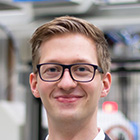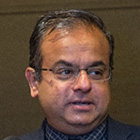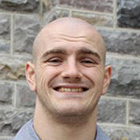Keynote: Why Employing People With Disabilities is Good for Your Business
Summary
Did you know that 25% of the U.S. has a diagnosed disability and over 40% of our country will go through a long-term disabling condition in their life? People with disabilities are a powerful workforce for the plastics industry. In this session, James Emmett will discuss how strategically employing people with disabilities is good for your company. He will cover how to actively tap this workforce during the current labor shortage. He will review the business case such as reduced turnover, lower recruiting costs, improved safety, and consistent productivity. He will end the session by highlighting how people with disabilities enhance your diversity and bring new perspectives to old problems.
About the Speaker
James Emmett is a national leader in development of employment services for individuals with disabilities as well as in assisting corporations in creation of outreach efforts to the disability community. He is an individual with a disability and a parent of three daughters with disabilities.
James has worked on many of the most visible disability & inclusion projects in the country with companies like Walgreens, Best Buy, Office Depot/Max, PepsiCo, and Mercy Health. Working through APSE HR Connect, James serves as lead consultant for TIAA-CREF’s “Fruits of Employment” project.
In the past, James has worked as the initial Disability Program Manager for Walgreens helping set up the company’s national disability initiative. He also assisted Easter Seals National in laying the foundation for their national autism services network. James graduated with a Master’s Degree in Rehabilitation Counseling from Illinois Institute of Technology.
James has also worked with companies such as UPS, ABN Amro/LaSalle Banks, Century Tile, and the Brookfield Zoo in developing outreach efforts targeting the disability community. He served as the Project Director for three award winning research/demonstration projects examining career development and transition strategies for individuals with autism and other disabilities. These projects included the Vocational Alliance Autism Project (VAAP), the Business Approach to Social Integration & Communication (BASIC) Grant, & the EmployAlliance Employment Within Business Project. James co-authored a chapter on school to work transition in the book Employment for Individuals With Asperger Syndrome or Non-Verbal Learning Disability. He recently completed an article for the Journal of Vocational Rehabilitation entitled Lessons Learned By A Rehabilitation Counselor in Corporate America. He is currently writing a book entitled Business & Autism: The Desktop Guide on How Companies Target the Growing Autism Community. James has presented at over 200 national, state, and local conferences on issues related to career development, transition, the business community, and disability.
Also, in partnership with the West Suburban Chamber of Commerce & Industry, James helped develop and narrated a video entitled, “Improving Customer Service for People with Disabilities” which has been viewed over 16,000 times on YouTube.
James’ career vision is to forever change the business and disability communities by helping hundreds of companies create disability inclusion brands.












































































































.jpg)
.jpg)
.jpg)

.jpg)




